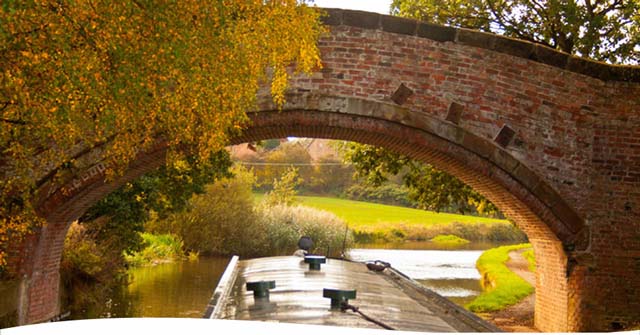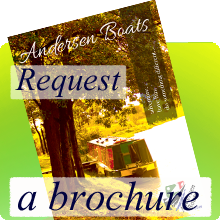Canal Boat Holidays with Andersen Boats
Handling a Canal boat
 You’re on your way on your canal boat! Here’s a few top tips on handling the narrow boat when you’re on the waterways.
You’re on your way on your canal boat! Here’s a few top tips on handling the narrow boat when you’re on the waterways.
Because boats don’t have brakes, you need to give yourself plenty of time to stop – especially when travelling downstream on flowing waters. Ease off the throttle, move into neutral and then use short bursts in reverse gear to slow down and come to a final halt. Remember that it’s more difficult to steer when you’re in reverse gear. You may need an occasional forward boost to get better control.
Steering a boat with a wheel is like steering a car, but it’s more difficult to judge where your wheel should be for going straight ahead. Get to know the feel of the wheel and the rudder position before you set off. Using a tiller to steer is simple – as long as you remember that pushing to the right will make the boat head left and vice versa. Be patient and plan ahead – the boat will take a few seconds to respond.
Your boat pivots from a point about halfway along its length. That means you need to watch out for the front and the back. If you line up the front only and then try to turn into a narrow gap – a bridge or lock, for example – you risk hitting the side with the back of your boat.
Going aground
Every skipper goes aground at some point – it’s not a disaster. Don’t try to force your way over the obstacle or you’ll find yourself even more stuck. Instead, use reverse gear to back away into deeper water.
If you’re firmly stuck, ask some or all of the crew to move to the side of the boat that’s still floating (but not to the extent that you’d risk capsizing!). Now use the pole to push off against a solid object or the bed of the waterway – if you put the pole straight down and try to use it as a lever, it’ll either break or you’ll fall in. And keep the top of the pole away from your face and body, in case it slips suddenly.
Special safety tips
- On a traditional narrowboat, stand inside the hatch so you won’t fall off the small back deck – and watch out for the swing of the tiller
- Always be aware of what’s happening around you – on the boat, in the water and on the banks
- Don’t let passengers stand or sit in the way of the tiller
- Think ahead and make sure you’re lined up for bridge and lock entrances well in advance
- Slow down almost to a stop and carry out all your manoeuvres as slowly as possible.
Don’t forget to stow the mooring stakes and hammer.
Check the area is clear of boat traffic then push the canal boat away from the bank so you can make a clean get away, with your propeller in deep water. In shallow water, push the back of the boat out, then reverse away until there’s room to straighten up.
When the canal boat’s straight, go into forward gear and accelerate gently to cruising speed. On all waterways, you drive on the right. In practice, on most canals, you’ll keep to the centre of the channel – it’s shallow near the edges – unless there’s another boat coming towards you.
Always slow down when passing anglers and other boats. Don’t let your boat create a breaking wave or a lowering of the water along the bank just ahead of the boat. These are signs that you should throttle back to prevent damage to the bank and disturbance to moored boats. Excessive speed can dislodge mooring pins.
Don’t forget you can download the Boaters Handbook here.
How to operate a canal boat
Here are sources of helpful information the Boaters Handbook & the Canal & River Trust Boaters Handbook Video.
- Getting started on a Canal Boat
- Handling a Canal boat
- Locks, Bridges & Tunnels
- Mooring Up
- Safety on the water





















